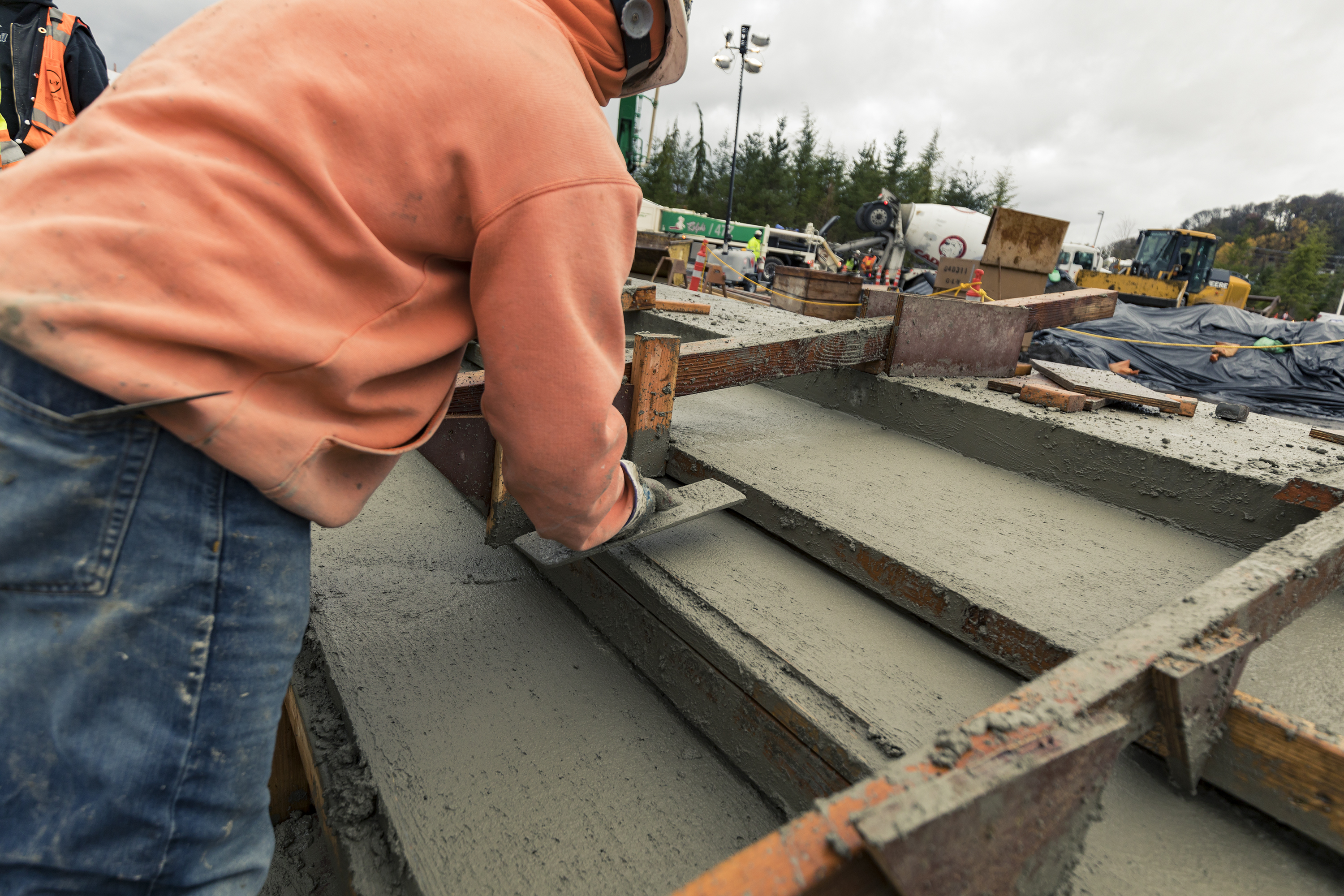Concrete & Carbon Reduction: Challenges, Innovations, and a Sustainable Future

Across the AEC Industry, many are focusing on how to reduce the embodied carbon in our projects. With concrete and steel being the biggest culprits in ground-up projects, it’s only fitting that they get the most press. In this piece we’re focusing on the cement component of concrete.
Puget Sound Region’s Approach
In the greater Puget Sound region, our largest ready-mix suppliers use Type 1L cement, which is cement mixed with limestone, providing a 5 to 15% carbon reduction over Type 1 (normal) cement. It’s unclear why the concrete producers switched over to Type 1L. It could be that they wanted to reduce their carbon footprint or that Type 1L has been found to be more cost effective than Type 1. Either way we can still focus on making more improvements to concrete’s carbon impact.
The easiest way to reduce the embodied carbon of concrete is to reduce the ratio of cement in the mixes, as this creates the lion’s share of the carbon emissions. Often, we use supplementary cementitious materials (SCMs) like slag or fly ash. However, the greater volume of SCMs, the longer it can take for the concrete to set up and the harder it may be to finish. This isn’t an issue for footings, walls, and housekeeping pads but can be difficult for slabs or post-pensioned (PT) decks.
Oftentimes, reduced carbon concrete mixes also need additional time to reach strength, affecting construction schedules as crews must wait longer to strip forms off the concrete. This is especially problematic for PT decks where the cables are stressed as soon as the concrete reaches 3000 psi, typically in 2 to 3 days, but with a higher percentage of SCMs it can be a much longer process. When the project team is aware of carbon reduction goals at the onset, they can schedule the project accordingly to save both time and money.
Innovations in SCMs
There is a multitude of new SCMs and admixture chemicals to replace or reduce the volume of cement needed in concrete. One of the up-and-coming innovations includes an electrochemical process that eliminates much of the carbon from the cement making process. One innovation using limestone calcined clay cement (LC3) is getting good reviews, and there’s one zeolite product that also looks to be zero carbon.
Addressing Concerns
I know you’re thinking to yourself – these are all great, what’s the problem? Glad you asked! First and foremost, many people don’t want to change a structural component to one that is new to the market. How will the product work in extreme temperatures, in an earthquake, in 150 years? Yes, lab testing is being done with all the innovations, but many structural engineers are hesitant to put their name on something that’s brand new.
Another issue is scalability. In talking with one of our local ready-mix suppliers I was given this scenario: A salesperson for a zero-carbon cement replacement product paid them a visit, wanting them to use their merchandise. The salesperson excitedly told them that they have a plant in progress, and it will be ready within 5 years’ time. This plant will be able to produce 50 tons of SCM per year. The challenge is this ready-mix supplier needs 375 tons PER DAY.
Positive Outlook
The good news is that people are focusing on reducing the embodied carbon in our buildings. The more clients and designers that require carbon reduction, the faster our suppliers will respond to the market. We know this is true from our history with LEED certification requirements and the Living Building Challenge. If we require it, the industry will step up, so keep requiring carbon reduction. Our future depends on it.
This blog was written by Laura Soma (GLY) as part of the Sustainable Development Committee’s ongoing Sustainability Mindset series. For more information on how to join or sponsor the Sustainable Development Committee, email [email protected].





